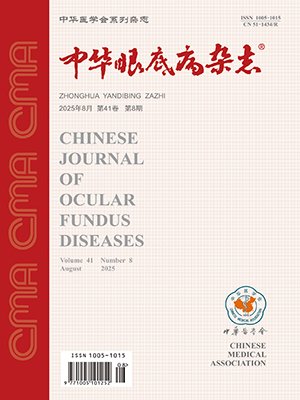Objective To observe the clinical manifestation and ophthalmoscopic image characteristics of uveal metastatic carcinoma. Methods Thirty-six uveal metastatic carcinoma patients (43 eyes) were enrolled in this study. The patients included 21 males and 15 females. The patients prime; ages ranged from 28 to 71 years, with a mean age of (47.3 plusmn;10.2) years. Seven patients had bilateral carcinoma and 29 patients had unilateral carcinoma. There were 30 patients with lung cancer, three patients with breast cancer, one patient with gastric cancer and two patients without primary tumors. There were 20 patients with known primary cancer, 16 patients visited the Department of Ophthalmology first. All the patients were examined documenting visual acuity, intraocular pressure, slit-lamp microscopy and mydriatic fundus examination. Meanwhile, 22 patients (26 eyes) were examined using B-type ultrasound and/or color Doppler flow imaging (CDFI). Twelve patients (12 eyes) were examined using fundus fluorescein angiography (FFA) and/or indocyanine green angiography (ICGA). Seventeen patients (22 eyes) were examined using MRI and/or CT. The clinical manifestation and ophthalmoscopic image characteristics of uveal metastatic carcinoma patients were observed. Results Among 43 eyes, four lesions were in the iris, three lesions in the ciliary body and 32 lesions were in the choroid. Fundus examination showed an isolated mass in 26 eyes and more than two masses in nine eyes. Metastatic tumors of the iris and ciliary body often showed irregular cauliflower-like mass with gray-white or meat-red color and abundant vessels. The choroidal metastasis usually demonstrated flat rounded or irregular intraocular masses with gray-yellow or gray-white color in the posterior pole. B-type ultrasound showed ill-defined, flat, and irregular-shaped masses with uneven internal reflectivity. CDFI showed rich blood flow within the tumor. FFA and (or) ICGA showed pinpoint and mottled leaks against hyperfluorescence background. MRI revealed low or middle signal using T1WI and low signal intensity using T2WI. Conclusions The uveal metastatic carcinoma usually occurs in one eye with an isolated mass. Most of them show a flat gray-yellow mass in posterior choroids and have the primary cancer sites of the lung. FFA and/or ICGA show pinpoint and mottled leaks against hyperfluorescence background. B-type ultrasound and (or) CDFI show ill-defined, flat, and irregular-shaped mass with rich blood flow within the tumor. MRI reveals low signal intensity on T2WI.
Citation: 王晓鹏,颜建华. Clinical manifestation and ophthalmoscopic image characteristics of uveal metastatic carcinoma. Chinese Journal of Ocular Fundus Diseases, 2012, 28(6): 577-580. doi: Copy
Copyright © the editorial department of Chinese Journal of Ocular Fundus Diseases of West China Medical Publisher. All rights reserved




